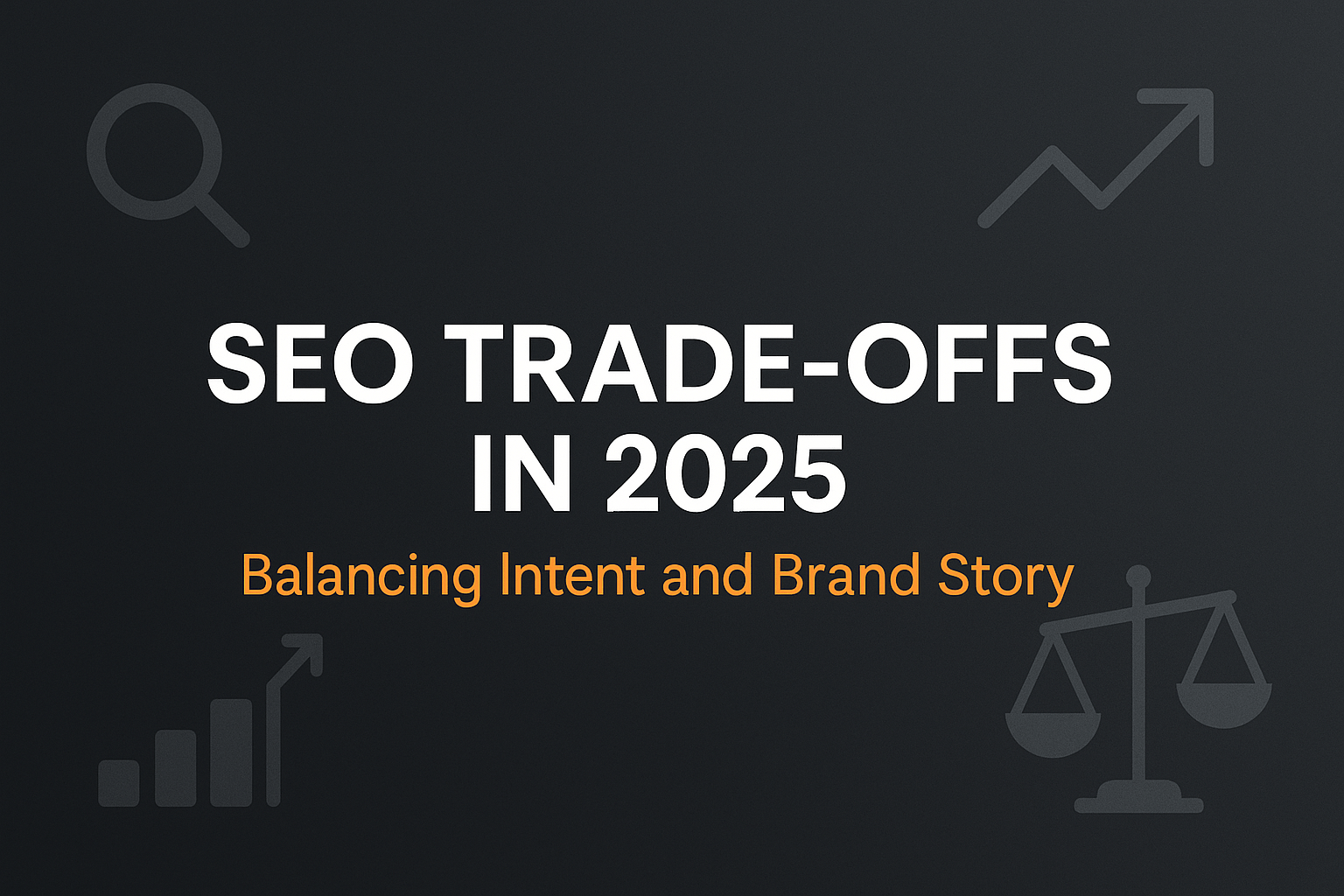In 2025, search intent rules SEO strategy. Every guide, every tool, every agency stresses it: optimise for what people search. And they’re not wrong. But here’s the problem — when intent becomes the only compass, brand story suffers.
The trade off? You might capture traffic, but you lose distinction. In crowded markets, that’s fatal.
The Search Intent Obsession
What most SMEs do
They build content strictly to satisfy keyword intent. Guides, FAQs, and comparison blogs dominate because they tick SEO boxes.
Why it fails long term
- Sameness: Every competitor answers queries the same way.
- Brand dilution: Content feels like it’s written for algorithms, not people.
- Weak differentiation: You win traffic but lose loyalty.
Search intent is a tool, not a strategy.
📌 Related reading: GA4 Made Simple: How to Track What Really Matters.
The Case for Brand Story in SEO
High performing SMEs weave brand voice into SEO content instead of stripping it out. They ask:
- What’s the unique point of view we bring?
- How can we answer search intent and reinforce our positioning?
- Which stories can only our brand tell?
Data gets you found. Story makes you remembered.
The Balancing Framework
1. Anchor in Intent (for discovery).
Yes, optimise around how people search — informational, navigational, transactional.
2. Layer in Brand POV (for differentiation).
Infuse perspective, examples, and voice that competitors can’t copy.
3. Design Content Journeys.
Lead with intent driven answers, then bridge into narrative and CTAs that carry brand flavour.
4. Measure Two Sets of Metrics.
- SEO metrics: rankings, organic traffic, CTR.
- Brand metrics: engagement time, repeat visitors, direct searches.
Example: Intent First vs Intent + Story
- Pure Intent Blog: “Best laptops under £1,000 in 2025.” Optimised, fast ranking, generic.
- Intent + Story Blog: “Best laptops under £1,000 in 2025 — and how our team tested them in real workflows.” Still answers intent, but with credibility and voice.
Which one builds trust? The second.
Why It Matters in 2025
As McKinsey notes in its top tech trends report, generative AI is reshaping discovery. Answers are commoditised. Distinctive perspectives are the moat.
FAQ
- Should SMEs ever prioritise brand story over SEO intent?
- Yes — especially in high-consideration or premium segments where differentiation drives margin.
- Won’t adding brand voice hurt rankings?
- No. If you fully cover search intent, adding voice strengthens engagement — which supports SEO signals.
- How do we measure brand story impact in SEO?
- Track branded search volume, direct traffic, and dwell time alongside keyword rankings and organic traffic.
- Is search intent less important in the AI era?
- Not less important — just insufficient on its own. AI will commoditise intent answers; brand story is your durable moat.
Conclusion
In 2025, SEO is no longer just about being found. It’s about being remembered. SMEs that balance search intent with brand story will cut through the noise, build loyalty, and win profitable growth.
👉 Want to keep your SEO sharp without losing your story? Book a discovery call and let Mostly Grey Digital craft content that ranks and resonates.
Key Takeaways
- Over optimising for search intent creates sameness and weakens brand.
- SEO success requires weaving story into intent driven content.
- Balance with a framework: intent → POV → journey → dual metrics.
- AI will commoditise intent; story is the differentiation moat.
- Data drives discovery. Story drives loyalty.
